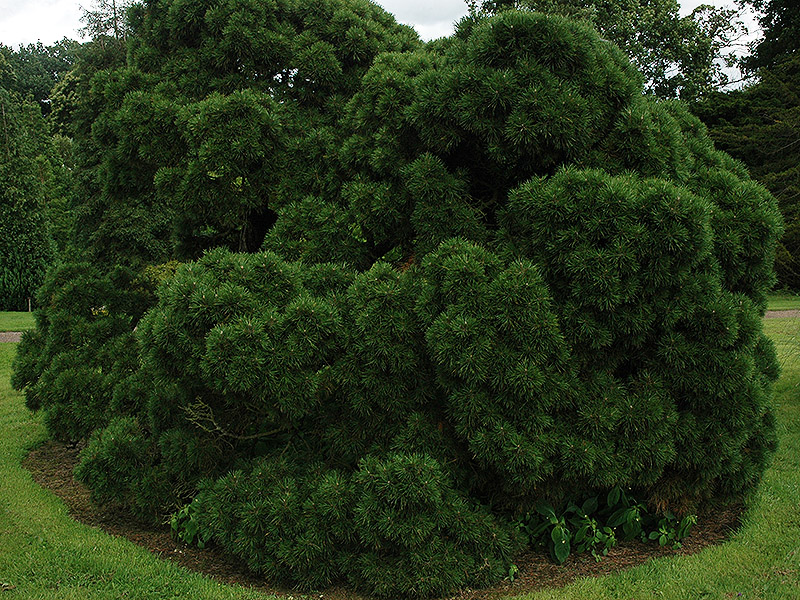
Woody > Pinus > Pinus sylvestris > Pinus sylvestris 'Moseri'
Pinus sylvestris
'Moseri'
Moseri Scots Pine
Origin: C. Bessard of eastern France.
Mike's
Opinion


"
This dense, low growing, globe like evergreen is relatively low maintenance and quite hardy. Most often used for its winter interest with its young bark a beautiful orange hue, maturing into a brownish-grey.
Michael Pascoe, NDP., ODH., CLT., MSc. (Plant Conservation)
"
| Family |
| Pinaceae |
| Genus |
| Pinus |
| Species |
| sylvestris |
| Cultivar |
| 'Moseri' |
| Category |
| Woody |
| Type |
| Shrub (evergreen) |
| Pronunciation |
| USDA Hardiness Zone |
| 2 |
| Canadian Hardiness Zone |
| 0a |
| RHS Hardiness Zone |
| H7 |
| Temperature (°C) |
| -46 -(-40) |
| Temperature (°F) |
| -50 -(-40) |
| Height |
| 2 m |
| Spread |
| 2.5 m |
Photographs
Description and Growing Information
Flowering Period
| General Description |
| A dwarf evergreen conifer with a globe like pyramidal form. Densely shaped, slow growing, approximately 6-7 cm of growth per year. |
| Landscape |
| Used most frequently as a feature plant for its intensely yellow-gold foliage and exfoliating bark through winter. |
| Cultivation |
| Prefers full sun and well drained soil. Cannot withstand 'wet feet' and is not drought tolerant. |
| Shape |
| Upright dwarf conifer, with a compact and rounded shape. |
| Growth |
| Slow |
| ID Characteristic |
| Distinct light green needles that turn a golden yellow in winter. |
| Pests |
| Potential for Diplodia and pine wilt fungus. |
| Habitat |
| Horticultural origin. |
| Bark/Stem Description |
| Young bark is medium textured with an orange tinge, becoming brownish-grey and scaly as it matures. |
| Flower/Leaf Bud Description |
| Moderately spherical and cylindrical, 5-7 cm long. |
| Leaf Description |
| Light green, 5-6 cm long needles that turn yellow-gold in the winter; 2 needles per fascicle. |
| Flower Description |
| Monoecious flowers in late May, pollen is spread from yellow male strobili. Pink female strobili mature into young green cones. |
| Fruit Description |
| Slightly sharp pointed scales and compact as new cones, gradually expanding and becoming dull with maturity; mature cones are 5-7 cm long. |
| Colour Description |
| Young bark has an orange tinge, maturing into brownish-grey. Light green foliage that turns yellow-gold. |
| Texture Description |
| Medium texture when young becoming coarse towards maturity. |
| Propagation |
| A side veneer-graft is used, on a smooth area on the rootstock, where a downward cut is made approximately 25-30 mm long. A cutting is prepared with the same cut, then is ready to be placed into the rootstock. Both are tightly sealed with plastic tape and/or grafting wax, allowing the vascular cambium to grow together. |


